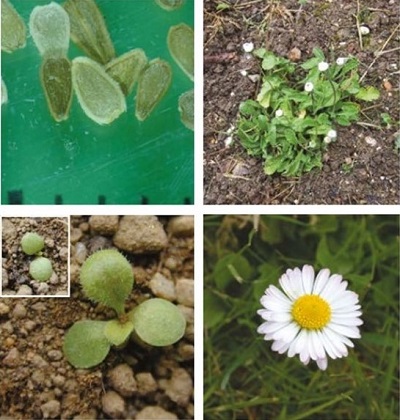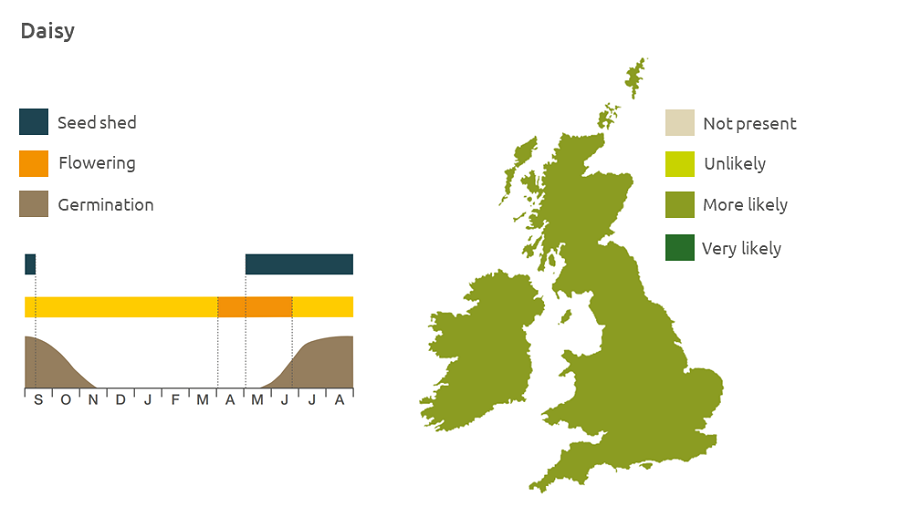- Home
- Knowledge library
- Distribution and biology of daisy in the UK
Distribution and biology of daisy in the UK
Daisy is a widespread broad-leaved weed. Find out how to identify and control it.
Overview
Daisy (Bellis perennis) is a potentially perennial, broad-leaved grassland species that may be found in compacted moist soils in arable crops, particularly in field margins. A serious problem in turf grasses, it is seldom weedy in other crops and has some biodiversity value. Plants overwinter with green leaves showing and may even continue growing. Reproduction is mainly vegetative from stolons, although the seeds can germinate over a wide temperature range. The flowers develop very fast in spring and summer. Seeds may be dispersed on feet and vehicles.
- It has value to biodiversity
Description
It is a small perennial plant with a dense leaf rosette and several upright leafless stems, approximately 5–15 cm long, each bearing a flowerhead of typical daisy-like flowers.
Key features
Young plant: The leaves have bristly hairs.
Lookalikes
Young daisy plants may be confused with Canadian fleabane: daisy is larger, slightly bluer and has more-rounded cotyledons.

Location and life cycle

Geographic distribution
Daisy is widespread throughout the British Isles, up to an altitude of 915 m, growing best in mown, grazed or trampled grassland, with low or moderate amounts of bare ground.
Soil type
It prefers neutral or chalky soils with pH>5.5, especially those which are reasonably wet for a period.
Seed statistics
- Seed longevity: 1–5 years
- Seed weight: 0.125 mg
- Seeds/head: 150
- Seeds/plant: 1,000–10,000
Management
Daisy does not persist with routine cultivation or hoeing, and is susceptible to cereal and some grassland herbicides.
For advice on herbicides, please speak with your agronomist or adviser.
When was this information last updated?
This page is based on content from the encyclopaedia of arable weeds publication. Since it was first released in 2008, the publication has been redesigned several times but not revised. However, it remains a good foundation for general information on the distribution and biology of weeds.

